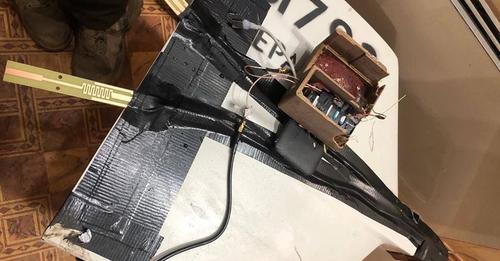The Russians are using Ukraine’s mobile phone network to coordinate drone attacks and bypass Ukrainian air defense.
The photos were shared on social media.
The invaders used a homemade module based on a router connected to the Ukrainian mobile network to display the location of the modified drones.
In this way, the Russian military is trying to identify weaknesses in Ukrainian air defense. To do so, they track the places where drones prematurely “stop” their advance and send the next wave of drones on a different route in an attempt to find a safe “corridor.”

Modified Shahed-136 drone
The additional superstructure that provides new functionality is makeshift. This is evidenced by the fact that all the elements are taped to the fuselage.
The taped module consists of a plastic container printed on a 3D printer, which contains an Alcatel 3G modem with a SIM card of a Ukrainian operator. Two antennas are connected to it for signal transmission.
- Elements of the structure that were taped to the wing of the Shahed-136
- A router and explosives in a plastic container taped to the Shahed-136
- A container with a small charge of explosives on the wing of a Shahed-136
- The router that was taped to the Shahed-136
The module is not connected to the on-board power grid and is powered by a nearby household charging battery.
All the electronics in the container are filled with explosives. In addition, a wire runs from the module to the nose of the fuselage, presumably to the warhead. All of this looks like a means of self-destruction in the event of a drone crash to prevent Ukrainian engineers from analyzing the wreckage. However, the explosives were not triggered.
It seems that the creators of this design intended that during the flight, the wing-mounted module should transmit its location to the Russians via a mobile communication network. In the event of a standstill, the drone’s “mark” on the map would stop, signaling that it had been shot down.
This decision was intended to address one of the main drawbacks of Iran’s Shahed-136 drones – a fully autonomous guidance system that does not transmit any information to its operator after launch.
There is also an alternative assumption online that the new module can be used to navigate the terrain using signals from communication towers or to control the drone through the Ukrainian network. This version is unlikely due to the lack of visible connection of the new add-on to the drone’s control system.
It is worth noting that this solution is still being tested and is unlikely to be available on all drones in the near future.




